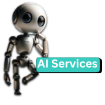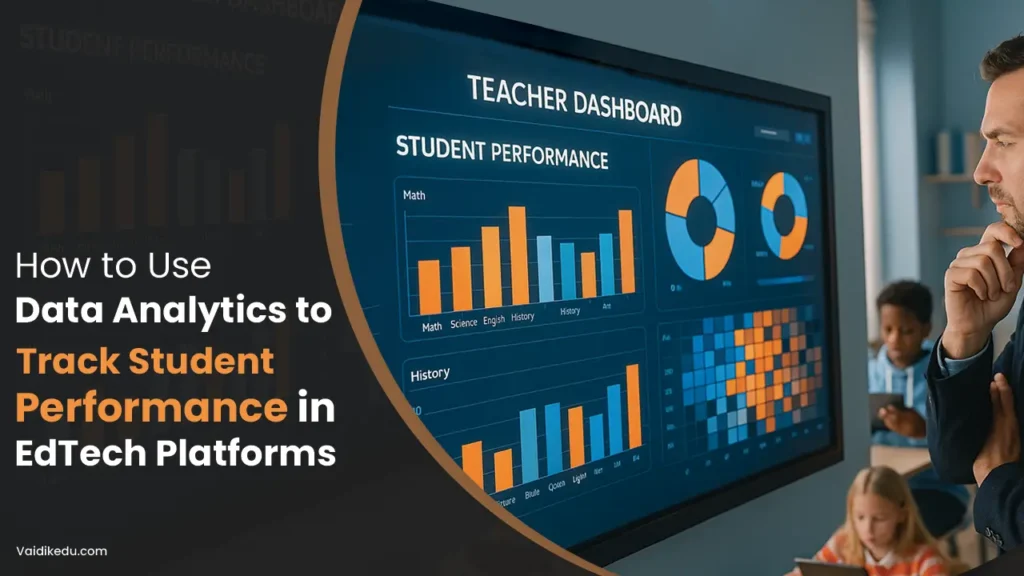Data analytics has emerged as a game-changing tool for monitoring and enhancing student performance in today’s technologically sophisticated learning environment. The growth of EdTech platforms has given teachers access to a multitude of data that can provide valuable insights on student engagement, learning patterns, and academic success. Education is transforming as a result of data-driven decision-making replacing traditional evaluation methods.
The allure of data analytics lies in its ability to transcend superficial comprehension. It predicts outcomes, identifies patterns, and supports customized learning experiences. This method can be used by educators to identify kids who may need extra help as well as to develop solutions that satisfy a variety of learning needs.
This blog explains how to use data analytics to monitor and improve student performance on EdTech platforms step-by-step. We’ll examine how educators may use data to establish a more successful and inclusive learning environment, from comprehending metrics to putting specific strategies into practice.
Understanding The Use of Data Analytics in Education Technology.
To produce practical thoughts, data analytics comprises collecting, processing, and analyzing data. Measures including student engagement, test results, attendance, and interaction patterns are commonly included in this data when discussing EdTech systems.
The goal is to interpret these figures in order to comprehend student performance, the challenges they face, and effective ways to overcome them.
The ability to give quick responses is one of the biggest advantages of data analytics in education. Conventional assessments usually lag, and teachers often find out about a student’s struggles after it’s too late. But by employing data analytics, educators can identify problems as they arise and provide timely fixes.
Moreover, customized learning is made possible by data analytics. EdTech platforms can provide tailored information, activities, and resources that suit each student’s learning style and speed by evaluating individual performance data. This adaptability is particularly helpful in diverse classrooms where students have varying learning needs and competency levels.
A Step-by-Step Guide To Applying Data Analytics in Education Technology
Step 1: Establish your goals
Prior to beginning data analytics, it is essential to establish certain goals.
Consider this:
What do I want data analytics to accomplish?
Am I trying to find students who are at risk, raise engagement, or enhance overall student performance?
By establishing these objectives, you can prevent yourself from becoming overloaded with irrelevant data and concentrate on the most crucial signs.
Step 2: Determine important metrics
Choose the measurements that will assist you reach your goals after they are obvious. In EdTech platforms, the following KPIs are frequently measured:
Time spent on tasks, login frequency, and conversation involvement are examples of engagement indicators.
Test results, assignment completion rates, and grade advancement are examples of performance metrics.
Patterns in content access, preferred topics, and trouble spots are examples of behavioral metrics.
Each of these metrics gives useful information about various aspects of a student’s learning process.
Step 3: Compile And Arrange information
Analytics dashboards that automate data collection are a common feature of EdTech platforms. These dashboards gather information from peer collaborations, interactive classes, and quizzes, among other sources. Verify that the information is:
precise and error-free.
displayed in an approachable manner, like tables or graphic graphs.
Additionally, a lot of platforms let teachers export data for further analysis using specialized software or third-party tools like Excel.
Step 4: Find insights by Analyzing Data
Analyzing data is crucial to this process. To identify trends and patterns, use analytics tools. For instance:
Do some students consistently receive low grades in particular subjects?
Are certain lessons seeing a decline in engagement?
Which instructional techniques yield the best outcomes?
Even outcomes, like which children are most likely to fall behind, can be predicted by machine learning algorithms in sophisticated EdTech platforms.
Step 5: Put Targeted Interventions into Practice
Practical plans should be based on insights from data analysis. For instance:
Give students who are having trouble in particular areas extra resources or tutoring.
Lesson plans should be modified to emphasize problems with low involvement.
Assign customized tasks to each person to address their unique strengths and weaknesses.
To ascertain the efficacy of interventions and make necessary methodology adjustments, they should be continuously evaluated.
Step 6: Encourage A Collaborative Culture
When instructors, students, and parents are all involved, data analytics works best. Give students insights so they can better understand their areas of growth and advancement.
Involve parents by providing comprehensive performance evaluations and specific suggestions for in-home assistance.
In order to enhance teaching strategies generally, educators should collaborate by sharing best practices and utilizing group data.
Step 7: Make Sure Data Security And Privacy
tremendous power with a tremendous deal of responsibility. Strong security measures are needed for data analytics in order to preserve student privacy. Make sure that all data collection complies with legal requirements including FERPA and GDPR. Utilize anonymized data whenever feasible and restrict access to sensitive information.
Benefits of Using Data Analytics in Education Technology
Better student results: Performance is enhanced by timely interventions made possible by real-time tracking.
Personalized Learning: Resources and strategies that are specifically designed to meet the needs of each student ensure that they get the support they need.
Effective Resource Allocation: By using data, educators can save time and money by identifying areas in which to concentrate their efforts.
Increased Engagement: Producing more interesting and pertinent material is made possible by knowing what works.
Challenges And How To Overcome Them
Despite the obvious advantages of data analytics, there are a number of difficulties:
Data Overload: Pay attention to pertinent metrics to avoid feeling overloaded.
Opposition To Change: Train instructors so they feel more comfortable utilizing analytics tools.
Technical Restrictions: Build a solid infrastructure and make investments in reliable platforms.
Conclusion
Education is being revolutionized by data analytics, which turns unstructured data into pertinent information. Teachers can utilize these technologies to monitor their students’ progress, use personalized teaching strategies, and foster a lifelong learning culture. However, cooperation, a dedication to data privacy, and clearly defined objectives are necessary for successful incorporation
The future of education could be greatly affected by data analytics as educational technology advances. By utilizing this technology, educational institutions will be able to better prepare the kids of tomorrow, guaranteeing the success of everyone.
Frequently Asked Questions
Data analytics is the use of technologies and procedures to collect, process, and analyze educational data in order to monitor and improve student performance.
It delivers real-time insights into learning patterns, allowing for tailored interventions and timely support.
Popular options include built-in dashboards on platforms like Google Classroom, LMS statistics, and third-party software such as Tableau.









